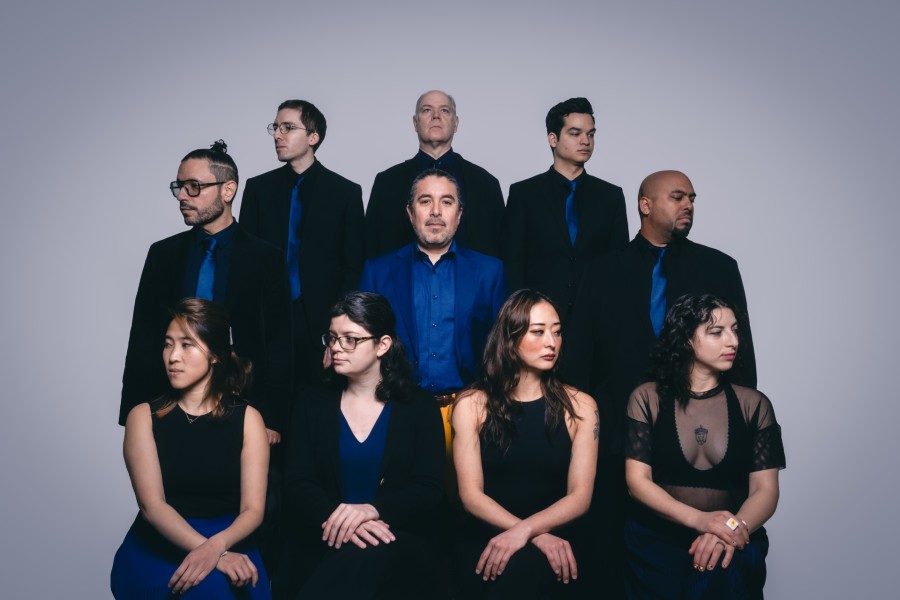 Marion Cecilia Davies (née Douras, January 3, 1897 – September 22, 1961) was an American film actress, producer, screenwriter, and philanthropist.
Marion Cecilia Davies (née Douras, January 3, 1897 – September 22, 1961) was an American film actress, producer, screenwriter, and philanthropist.
Davies had appeared in several Broadway musicals and one film, Runaway Romany (1917) before newspaper tycoon William Randolph Hearst, with whom she had begun a romantic relationship, took over management of her career. Hearst financed Davies’ pictures and promoted her heavily through his newspapers and Hearst Newsreels. He founded Cosmopolitan Pictures to produce her films. Hearst preferred to see her in historical dramas, but her real talent was in comedy. For this reason, Davies is often remembered today as Hearst’s mistress and the hostess of many lavish events for the Hollywood elite. In particular, her name is linked with the 1924 scandal aboard Hearst’s yacht when one of his guests, film producer Thomas Ince, died.
In the film Citizen Kane (1941), the title character’s second wife—an untalented singer whom he tries to promote—was widely assumed to be based on Davies. But many commentators, including Citizen Kane writer/director Orson Welles himself, have defended Davies’ record as a gifted actress, to whom Hearst’s patronage did more harm than good. She retired from the screen in 1937, choosing to devote herself to Hearst and charitable work.
In Hearst’s declining years, Davies provided financial as well as emotional support until his death in 1951. She married for the first time eleven weeks after his death, a marriage which lasted until Davies died of stomach cancer in 1961 at the age of 64.
Davies was born Marion Cecilia Elizabeth Brooklyn Douras on January 3, 1897, in Brooklyn, the youngest of five children born to Bernard J. Douras (1857–1935), a lawyer and judge in New York City; and Rose Reilly (1867–1928). Her father performed the civil marriage of Gloria Gould Bishop. She had three older sisters, Ethel, Rose, and Reine. An older brother, Charles, drowned at the age of 15 in 1906. His name was subsequently given to Davies’ favorite nephew, screenwriter Charles Lederer, the son of Davies’ sister Reine Davies.
The Douras family lived near Prospect Park in Brooklyn. The sisters changed their surname to Davies, which one of them spotted on a real-estate agent’s sign in the neighborhood. Even at a time when New York was the melting pot for new immigrants, having a British surname greatly helped one’s prospects—the name Davies has Welsh origins.
Educated in a New York convent, Davies left school to pursue a career. She worked as a chorus girl in Broadway revues and modeled for illustrators Harrison Fisher and Howard Chandler Christy. In 1916, Davies was signed on as a Ziegfeld girl in the Ziegfeld Follies.
After making her screen debut in 1916, modelling gowns by Lady Duff-Gordon in a fashion newsreel, she appeared in her first feature film in the 1917 Runaway Romany. Davies wrote the film, which was directed by her brother-in-law, prominent Broadway producer George W. Lederer. The following year she starred in two films—The Burden of Proof and Cecilia of the Pink Roses. Playing mainly light comic roles, she quickly became a film personality appearing with major male stars, making a small fortune, which enabled her to provide financial assistance for her family and friends.
In 1918, Hearst started the movie studio Cosmopolitan Productions to promote Davies’ career and also moved her with her mother and sisters into an elegant Harlem, NY townhouse at the corner of Riverside Drive and W. 105th Street.
In 1918, Hearst started the movie studio Cosmopolitan Productions to promote Davies’ career and also moved her with her mother and sisters into an elegant Harlem, NY townhouse at the corner of Riverside Drive and W. 105th Street. Cecilia of the Pink Roses in 1918 was her first film backed by Hearst. She was on her way to being the most infamously advertised actress in the world. During the next ten years she appeared in 29 films, an average of almost three films a year. One of her best known roles was as Mary Tudor in When Knighthood Was in Flower (1922), directed by Robert G. Vignola, with whom she collaborated on several films.
By the mid-1920s, however, Davies‘ career was often overshadowed by her relationship with William Randolph Hearst and their social life at San Simeon and Ocean House in Santa Monica; the latter dubbed by Colleen Moore “the biggest house on the beach – the beach between San Diego and Vancouver”.
According to her own audio diaries, she met Hearst long before she had started working in films. Hearst later formed Cosmopolitan Pictures, which would produce most of her starring vehicles. Hearst’s relentless efforts to promote her career had a detrimental effect, but he persisted, making Cosmopolitan’s distribution deals first with Paramount, then Goldwyn, and with Metro-Goldwyn-Mayer. Davies herself was more inclined to develop her comic talents alongside her friends at United Artists, but Hearst pointedly discouraged this. Davies, in her published memoirs The Times We Had, concluded that Hearst’s over-the-top promotion of her career, in fact, had a negative result. One particular example, he had purchased the Cameo Theatre (located in San Francisco) in 1929. He then lavishly remodeled both the exterior and interior decor in a rosebud-hued Art Moderne motif, and renamed it The Marion Davies Theatre. From Hearst’s office windows further up Market Street, he could see pink neon letters constantly spelling out her name above the marquee. Hearst Metrotone Newsreels were included on the program, and these newsreels regularly touted Miss Davies’ social activities.
The 1922-23 period may have been her most successful, with both When Knighthood Was in Flower and Little Old New York ranking among the top 3 box-office hits of those years. Indeed, she was named the #1 female box-office star by theater owners and crowned as “Queen of the Screen” at their 1924 convention in Hollywood. Other hit silent films included Beverly of Graustark, The Cardboard Lover, Enchantment,The Bride’s Play, Lights of Old Broadway, Zander the Great, The Red Mill, Yolanda, Beauty’s Worth, and The Restless Sex.
Hearst loved seeing her in expensive costume pictures, but she also appeared in contemporary comedies like Tillie the Toiler, The Fair Co-Ed (both 1927), and especially three directed by King Vidor, Not So Dumb (1930), The Patsy and the backstage-in-Hollywood saga Show People (both 1928). The Patsy contains her imitations, which she usually did for friends, of silent stars Lillian Gish, Mae Murray and Pola Negri. King Vidor saw Davies as a comedic actress instead of the dramatic actress that Hearst wanted her to be. He noticed she was the life of parties and incorporated that into his films.
After seeing photographs of St Donat’s Castle in Country Life magazine, the Welsh Vale of Glamorgan property was bought and revitalized by Hearst in 1925 as a gift to Davies. Hearst and Davies spent much of their time entertaining, holding lavish parties with guests at their Beverly Hills estate. Frequent guests included, among others, Charlie Chaplin, Douglas Fairbanks, and a young John F. Kennedy. Upon visiting St Donat’s, George Bernard Shaw was quoted as saying: “This is what God would have built if he had had the money.”
The coming of sound made Davies nervous because she had never completely overcome a childhood stutter. Her career continued, however, and she made several comedies and musicals during the 1930s, including Marianne (1929), Not So Dumb (1930), The Florodora Girl (1930), The Bachelor Father (1931), Five and Ten (1931) with Leslie Howard, Polly of the Circus (1932) with Clark Gable, Blondie of the Follies (1932), Peg o’ My Heart (1933), Going Hollywood (1933) with Bing Crosby, and Operator 13 (1934) with Gary Cooper. She was involved with many aspects of her films and was considered an astute businesswoman. Her career, however, was hampered by Hearst’s insistence that she play distinguished, dramatic parts as opposed to the comic roles that were her forte.
Hearst reportedly had tried to push MGM production boss Irving Thalberg to cast Davies in the title role in Marie Antoinette, but Thalberg gave the part to his wife, Norma Shearer. This rejection came on the heels of Davies having been also denied the female lead in The Barretts of Wimpole Street; that role going to Shearer as well. Despite Davies’ friendship with the Thalbergs, Hearst reacted by pulling his newspaper support for MGM and moving Davies and Cosmopolitan Pictures distribution to Warner Brothers. Davies’ films there were Page Miss Glory (1935), Hearts Divided, Cain and Mabel (both 1936), and Ever Since Eve (1937). Mirroring events at MGM, Warners purchased the rights to the play “Tovarich” for Davies, but the film version Tovarich was given to Claudette Colbert. Hearst shopped Davies and Cosmopolitan for another year, but no deals were made and Davies officially retired. In 1943, Davies was offered the role of Mrs. Brown in Claudia, but Hearst persuaded her from taking a supporting role and tarnishing her starring career. In her 45 feature films, over a 20-year period, Davies had never been anything but the star and always got first billing. The only exceptions were films in which she appeared as herself.
When Cosmopolitan folded, Davies left the film business and retreated to San Simeon. Davies would later state in her autobiography that after many years of work she had had enough and decided to devote herself to being Hearst’s “companion and confidante”. In truth, she was intensely ambitious, but faced the harsh reality that at the age of forty, she could no longer play the young heroines or madcaps as in earlier films, and that she was unwilling to play supporting roles. Decades after Davies’ retirement and death, however, the consensus among some critics is more appreciative of her efforts, particularly in the field of comedy.
Largely because of the damage to her reputation caused by Citizen Kane, Davies has been largely ignored by film critics and historians. But a recent reassessment of her work has come about via broadcast of her films on Turner Classic Movies and the release on DVD on her silent films like When Knighthood Was in Flower, Beauty’s Worth, The Bride’s Play, Enchantment, The Restless Sex, April Folly, and Buried Treasure. This new availability, along with the publication of The Silent Films of Marion Davies by Edward Lorusso have allowed for a better assessment of Davies’ work as an actress. Despite the legend, most of Davies’s films made money and she remained a popular star for most of her career. Indeed, Davies was the #1 female box office star of 1922-23 thanks to the enormous popularity of When Knighthood Was in Flower and Little Old New York, which both ranked among the biggest box-office films of 1922 and 1923, respectively.
In her later years, Davies was involved with charity work. In 1952, she donated $1.9 million to establish a children’s clinic at UCLA which was named for her; the clinic’s name was changed to The Mattel Children’s Hospital in 1998. She also fought childhood diseases through the Marion Davies Foundation.
She suffered a minor stroke in 1956, and later underwent surgery on her jawbone for osteomyelitis. Twelve days after the operation, Davies fell in her hospital room and broke her leg. Davies made her last public appearance on January 10, 1960, on an NBC television special called Hedda Hopper’s Hollywood. Joseph P. Kennedy rented Davies’ mansion and worked from behind the scenes to secure his son John F. Kennedy’s nomination during the 1960 Democratic National Convention in Los Angeles. It was not long after that she was diagnosed with stomach cancer.
Publishing mogul William Randolph Hearst and Davies lived as a couple for decades but were never married, as Hearst’s wife refused to give him a divorce. At one point, he reportedly came close to marrying Davies, but decided his wife’s settlement demands were too high. Hearst was extremely jealous and possessive of her, even though he was married throughout their relationship. Lita Grey, the second wife of Charlie Chaplin, wrote four decades later that Davies confided with her about the relationship with Hearst. Grey quoted Davies saying:
God, I’d give everything I have to marry that silly old man. Not for the money and security—he’s given me more than I’ll ever need. Not because he’s such cozy company, either. Most times, when he starts jawing, he bores me stiff. And certainly not because he’s so wonderful behind the barn. Why, I could find a million better lays any Wednesday. No, you know what he gives me, sugar? He gives me the feeling I’m worth something to him. A whole lot of what we have, or don’t have, I don’t like. He’s got a wife who’ll never give him a divorce. She knows about me, but it’s still understood that when she decides to go to the ranch for a week or a weekend, I’ve got to vamoose. And he snores, and he can be petty, and has sons about as old as me. But he’s kind and he’s good to me, and I’d never walk out on him.
By the late 1930s, Hearst was suffering financial reversals. After selling St Donat’s Castle, Davies bailed him out by writing out a check for $1 million. Hearst died on August 14, 1951.
The California State Parks staff at Hearst Castle report at the time of Hearst’s death, 51% of his fortune had been bequeathed to Davies.
Since the early 1920s, there has been speculation that Davies and Hearst had a child together some time between 1920 and 1923. The child was rumored to be Patricia Lake (née Van Cleve), who was publicly identified as Davies’ niece. On October 3, 1993, Lake died of complications from lung cancer in Indian Wells, California. Ten hours before her death, Lake requested that her son publicly announce that she was not Davies’ niece but Davies‘ biological daughter, whom she had conceived with Hearst. Lake had never commented on her alleged paternity in public, even after Hearst’s and Davies’ deaths, but did tell her grown children and friends. Lake’s claim was published in her death notice, which was published in newspapers.
Lake told her friends and family that Davies became pregnant by Hearst in the early 1920s. As the child was conceived during Hearst’s extra-marital affair with Davies and out of wedlock, Hearst sent Davies to Europe to have the child in secret to avoid a public scandal. Hearst later joined Davies in Europe. Lake claimed she was born in a Catholic hospital outside of Paris between 1920 and 1923 (she was unsure of the precise date). Lake was then given to Davies’ sister Rose, whose own child had died in infancy, and passed off as Rose and her husband George Van Cleve’s daughter. Lake stated that Hearst paid for her schooling and both Davies and Hearst spent considerable time with her. Davies reportedly told Lake of her true parentage when she was 11 years old. Lake said Hearst confirmed that he was her father on her wedding day at age 17 where both Davies and Hearst gave her away.
Neither Davies nor Hearst ever publicly addressed the rumors during their lives. Upon news of the story, a spokesman for Hearst Castle only commented that, “It’s a very old rumor and a rumor is all it ever was.”
In November 1924, Davies was among those aboard Hearst’s luxury yacht Oneida for a weekend party that resulted in the death of film producer Thomas Ince. Rumors have endured since then that Davies had an alleged relationship with Chaplin, which led to Ince’s accidental shooting by a jealous Hearst. Chaplin (among other actresses and actors) and Davies were aboard the yacht the night Ince died. There has never been any evidence to support the rumors.
Ince’s autopsy showed that he suffered an attack of acute indigestion while aboard the yacht and was escorted off in San Diego by another of the guests, Dr. Daniel Carson Goodman, a Hollywood writer and producer. Ince was put on a train bound for Los Angeles, but was removed from the train at Del Mar when his condition worsened. He was given medical attention by Dr. T. A. Parker and a nurse, Jesse Howard. Ince told them that he had drunk liquor aboard Hearst’s yacht. He was taken to his Hollywood home where he died the following day of a heart condition.
Eleven weeks and one day after Hearst’s death, Davies married Horace Brown on October 31, 1951, in Las Vegas. It was not a happy marriage. Davies filed for divorce twice, but neither was finalized, despite Brown admitting he treated her badly: “I’m a beast,” he said. “I took him back. I don’t know why,” she explained. “I guess because he’s standing right beside me, crying. Thank God we all have a sense of humor.”
Davies died of stomach cancer on September 22, 1961, in her home in Hollywood, California.
Her funeral at Immaculate Heart of Mary Church in Hollywood was attended by 200 people and many Hollywood celebrities, including Mary Pickford, Charles “Buddy” Rogers, Mrs. Clark Gable (Kay Spreckels), and Johnny Weissmuller. She is buried in the Hollywood Forever Cemetery. Davies left an estate estimated at $20 million.
Become a Harlem Insider!
By submitting this form, you are consenting to receive marketing emails from: Harlem World Magazine, 2521 1/2 west 42nd street, Los Angeles, CA, 90008, https://www.harlemworldmagazine.com. You can revoke your consent to receive emails at any time by using the SafeUnsubscribe® link, found at the bottom of every email. Emails are serviced by Constant Contact








